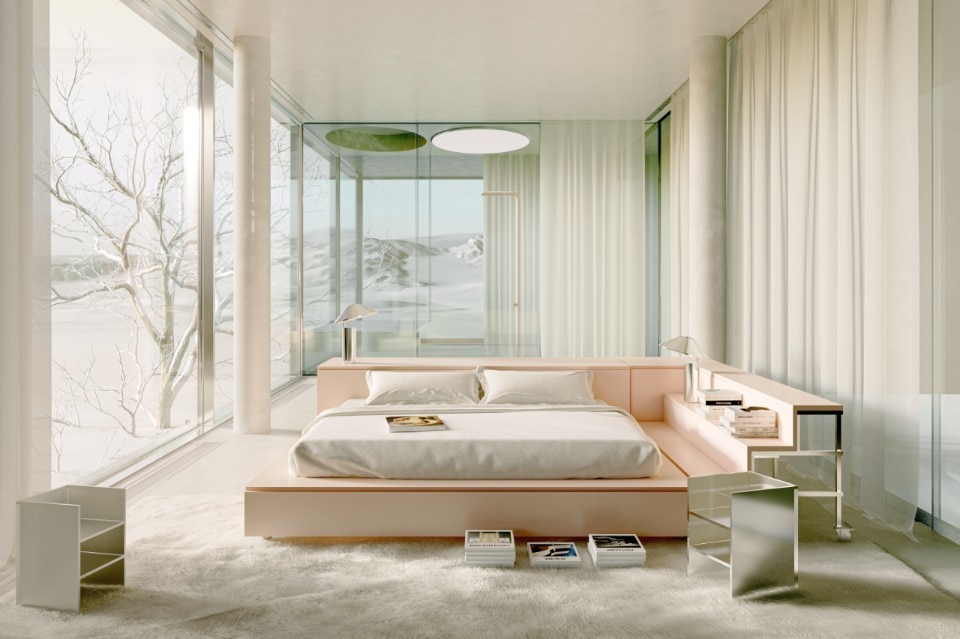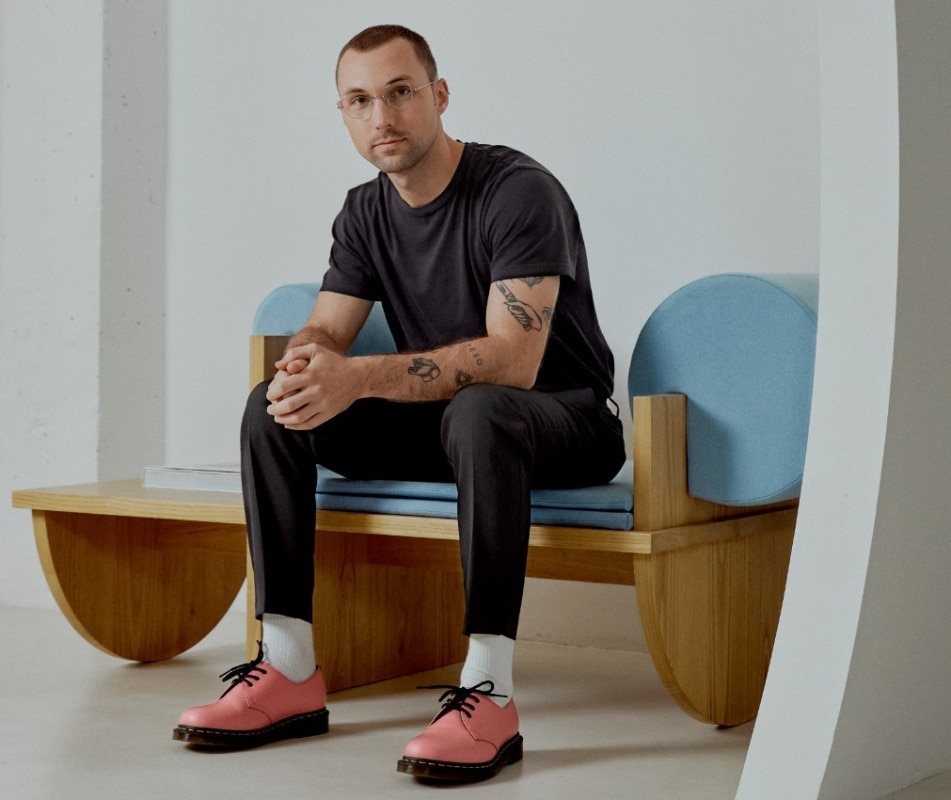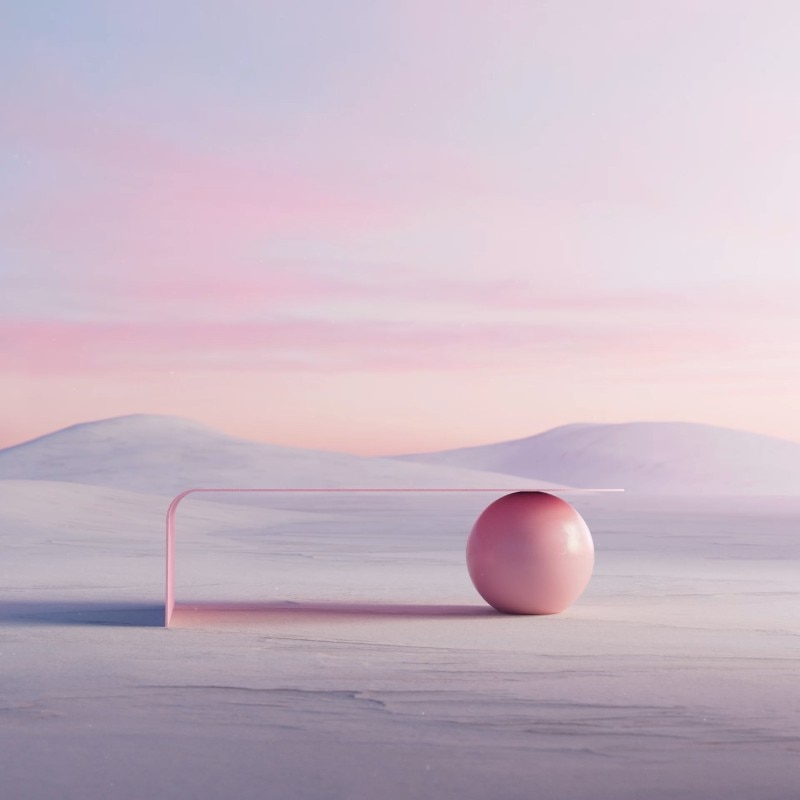Born in 1990, the Argentine artist and designer Andrés Reisinger was one of the first to push the boundaries between the digital and the physical design, defining a fertile in-between space of research and experimentation. His creative visions, both playful and immersive, are a bridge between these two – apparently opposite – worlds that are efficiently merged in Reisinger’s practice, coexisting and complementing each other.
His recent works are on view at Moco Museum in Amsterdam, where the exhibition Dreams gathers four key interventions that immerse visitors in a world in which imaginative landscapes, physical installations, and digital art intersect.

But which are the practices that could actually and actively lead to overcome the dichotomy between physical and virtual, so deeply rooted in our culture? The precondition to answer this question is being aware that, as Reisinger tells Domus, this division between physical and virtual is less a reality and more a construct we’ve inherited. Therefore, “overcoming this dichotomy requires us to shift our perspective and embrace the fact that both worlds are intrinsically linked”, explains the artist.
We need to draw boundaries between the known and the unknown, between what feels familiar and what feels foreign.
Andrés Reisinger
“In my own work”, he continues, “I explore how technology can enhance, rather than replace, our material reality. Digital tools, AI, and immersive environments are not separate from human creativity but intertwined with it. When we work with technology as a collaborator rather than just a tool, we start to dissolve the boundaries”. In any case, there is a reason why most of us – with some increasing exceptions from younger generations – still need to perceive virtual and real as two opposite entities.

According to the artist, this tendency likely comes from “our natural human instinct to categorize and define the world around us, we need to draw boundaries between the known and the unknown, between what feels familiar and what feels foreign”. The unconscious desire of maintaining control over our understanding of the world (that is “defining what is real, what is safe, what is human”, says Reisinger) and even a deeper fear of losing ourselves in the unfamiliar: this is what, according to the designer, prevents us from accepting the virtual and the real as two sides of the same coin.
All these concepts are well expressed in Reisinger’s exhibition in Amsterdam, for which he crafted immersive environments where these two realms – the virtual and the real – coexist and engage with one another. It is the case with artworks like A Dream and How I Write My Stories, where he leverages digital media to explore the complexities of the inner psyche, inviting visitors to navigate surreal landscapes that unfold through digital narratives. On the other hand, Take Over Elastic features monumental pink structures that create a sense of warmth and emotional resonance: “by rendering the digital world tangible and relatable”, explains the artist, “I aim to redefine the relationship between these spaces, encouraging us to perceive them not as distinct entities but as interconnected dimensions of our everyday experience”.

With his Take Over series, Reisinger was also one of the first artists to involve AI, raising dividing public opinion between those who appreciated it and those who criticized it: again, the key is recognising that artificial intelligence is a tool, and as such is can provide incredible opportunities for innovation and efficiency, but it is not a substitute to human skills: “in my experience, AI acts as a collaborator, extending my creative capabilities.
Technology offers infinite possibilities and an overabundance of choices isn't always conducive to creativity; but the true artistry comes from understanding and harnessing these tools, and practicing discipline even in front of limitless options.
Andrés Reisinger
The unpredictability of its contributions”, says Reisinger, “can lead to unexpected breakthroughs, pushing beyond our comfort zone and toward daring ideas. Ultimately, while AI offers inspiration, it is the human prerogative to choose which ideas align with our vision. This endless discovery of unforeseen possibilities becomes a continuous exercise in creation, a chance to embrace a free and liberating approach”.

As a digital artist, Reisinger has produced NFTs that continued to break records, reaching figures rarely seen at auction. Yet, today – after the speculative bubble burst – we asked him what is left of all the hype that NFTs and metaverse had in recent years, and if these tools still have potential for digital art. The artist reminds us that these are nothing more than tools, and as such will continue to be used until they’re obsolete.
And even after that, it will simply be replaced by more up-to-date technology – but this won’t affect the art itself: “I’ve always enjoyed using all the tools that are available to me, as this provides a challenge and opportunity for creative growth”, explains the artist. “Technology offers infinite possibilities”, he continues, “and an overabundance of choices isn't always conducive to creativity; but the true artistry comes from understanding and harnessing these tools, and practicing discipline even in front of limitless options. These limitless options can be turned into mere tools at our disposal. We should learn to think and act that way, understanding how to augment and aid the, truly, irreplaceable human mind and creative spirit”.
- Exhibition:
- Andrés Reisinger, Dreams
- Location:
- Moco Museum, Amsterdam
- Dates:
- from 25th October 2024 to 5th May 2025













